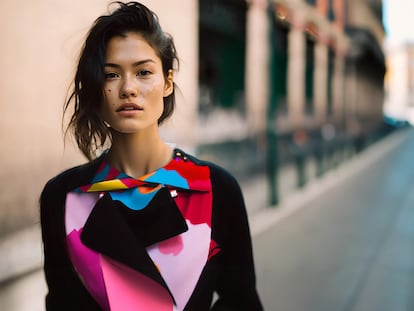Eli Russell Linnetz, the hit California designer who didn’t want to design
The creator was recently in Florence as the guest designer of the 104th edition of Pitti Immagine Uomo, the largest men’s fashion fair in the world
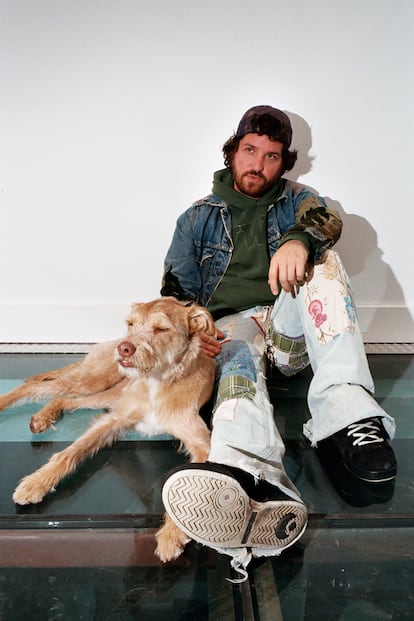
Four days away from home is too many for Eli Russell Linnetz. “I’ve had enough. I like staying at home. I don’t like to travel,” he confesses. He laughs as he says it, but with a tone of exhaustion, collapsed in a chair as he finalizes his latest collection. Too bad he quit drinking coffee. He still has two grueling days ahead of him, one full of tailoring, fittings and interviews like this one, starting early in the morning; and another that will conclude at nightfall with the first show for his much-talked-about label, ERL. The initials of one of the latest fashion sensations, the abbreviation that sums up the status of the clothing business in the times of multiple screens: there is no rock and roll without noise.
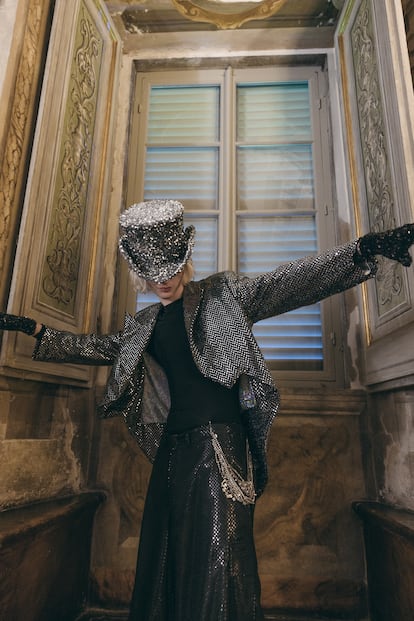
The score of ERL is deafening. Punk with surf guitar riffs, California rap-trap, Broadway melodies, popcorn soundtracks and catchy pop choruses; on paper it seems like a cacophony, but when played it sounds like an undeniable hit, every note in the right place: the one that appeals to a generational tale, the one that stirs a feeling of belonging, the one that evokes a certain nostalgia, the one that connects with today’s consumption values, the one that makes the CEOs of the world of luxury vibrate. That is why its author is in Florence, as the guest star designer of the 104 Pitti Immagine Uomo fair. Being summoned by the largest global showcase of men’s prêt-à-porter (Raf Simons, Virgil Abloh, Rick Owens, Martin Margiela, Jun Takahashi and Telfar have been celebrated there) means that you are a success among the critics and the public. You’re above it all. “I’m so sure, like I’m always super confident in everything I make,” he says. Then he adds: “I don’t think really think about the money ever, you know. It’s like I always move into places I can’t afford, so I don’t feel any different when I don’t have money versus when I do so. But if there is money, I like spending it on my artwork.”
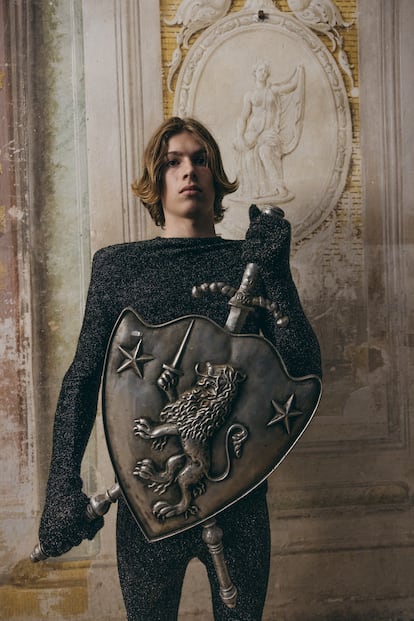
Linnetz, who will turn 33 in November, is what used to be called a Renaissance man, that kind of restless being whose interests are linked by hyphens: filmmaker-photographer-music producer-graphic designer-fashion creator. There is more, probably. “I guess I feel connected to the tormented artists that lived here during the Renaissance, it feels really authentic,” he says, alluding to the difficulties caused by scarcity: “It’s hard to do with fewer resources, you know, with limited resources and to tell, you know, when you have an infinite imagination.” Facing the display of clothing and accessories guarded in one of the buildings of the Fortezza da Basso, headquarters of the Florentine show, it is clear how boundless his is. “I approach every collection like a movie. This one takes place in 100 years from now. The city’s underwater, [and] all the surfers from California have gone surfing in Florence,” he explains. “Then they sneak into a fancy party at the American ambassador’s villa, they all dress up with the husband’s clothes and pretend to be rich people,” the plot continues. Taffetas, metallic silks, cool wool embroidered with crystals, sequins, jacquard. It seems that this time the budget did not force him to go to thrift and charity stores. “Well, not too much,” he says.

That he used part of the financial help that Pitti offers its guests to fly the contingent of surfers who walked the runway for him at the Palazzo Corsini in mid-June from his native Venice Beach to the Tuscan capital, is not ruled out. Nor that this may have been his last show. “The first and last,” he says, laughing. “For me right now I’m just making clothes, but who knows for how long... I don’t like dressing people, actually. I don’t think about my friends or anyone in the real world; for me, it exists only in my fantasies. I have such a fantasy world in my head,” he adds. Linnetz, who studied screenwriting at the University of Southern California, sees his current occupation as an “accident.” It does not run in the family, that’s for sure: his dad is a lawyer, and his mom made him watch musicals when he was little. But she also taught him to sew with a machine, a skill that helped him pay for his career, working in the wardrobe department of his university. The rest, he solved with large doses of self-esteem. And guts.
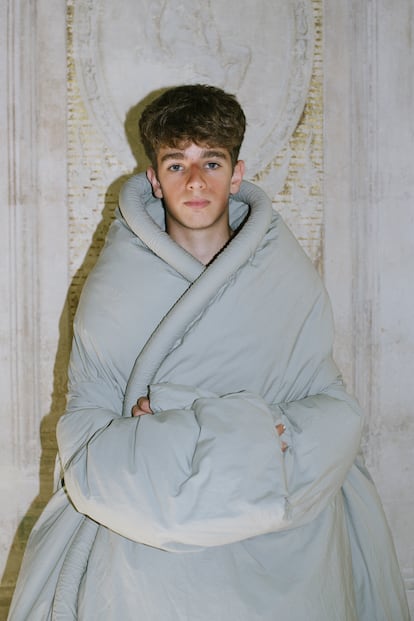
One thing to know about Eli Russell Linnetz is that he will stop at nothing. “I like to say I was on the wrestling team in high school. And the coach always used to say: ‘You can sleep when you die.’” At 14, he sent a fake resume to Marc Jacobs (“Never answered back”), at 15 he won a contest that made him an assistant to playwright and filmmaker David Mamet, and at 17 he caught the attention of Kanye West, with whom he unleashed his potential as a visual artist until 2016 (“I haven’t talked to him in years. So I don’t want to talk about. I left for reasons. Only he is crazy enough to give me my first opportunity,” he says about the controversial rapper). Then he worked as a photographer for Kim Kardashian, Selena Gomez, Grimes and Lady Gaga, for whom he ended up creating a set design for her show at the MGM hotel in Las Vegas, Enigma, giant robot included.
Finally, in 2018, he emerged as a designer with his own brand. To make a long story short: one day he thought about requesting an audience with Ronnie Cooke Newhouse, the founder and creative director of the luxury advertising agency House + Holme, who, impressed by his charisma, took him to Paris to work on a perfume campaign for Comme des Garçons. There he met Adrian Joffe, president of the emporium founded around the cult firm of his wife, the phenomenal Rei Kawakubo, and without wasting a second, he asked her if she would let him make clothes. “Looking back, I was very bold.”
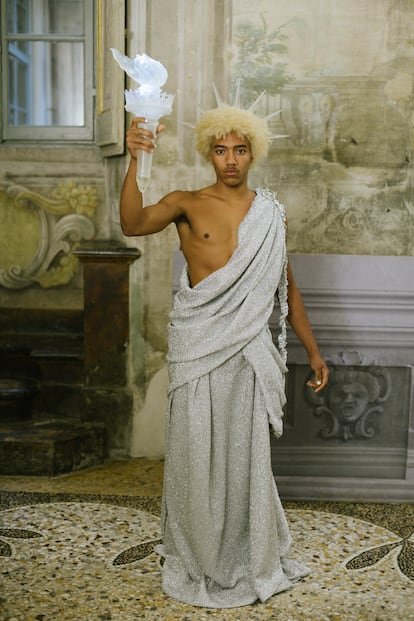
Under the wing of the CdG talent incubator program and its commercial division, the Dover Street Market concept store chain (a launching pad for emerging creators whom it helps to produce and distribute their collections), ERL’s impact was almost immediate, especially thanks to its creator’s ability to strike a chord with the myth of the genuinely American youth subculture. In fact, some consider his work a genuine expression of dude culture and gregarious masculinity, despite the fluidity of his clothes and the apparent homoeroticism of the images in his catalogs. “I never thought about gender. I was just thinking about telling characters or stories. I like to be vague and move through different genres like in a postmodern Querentin Tarantino movie, referencing something from the past to make it new,” he reflects.
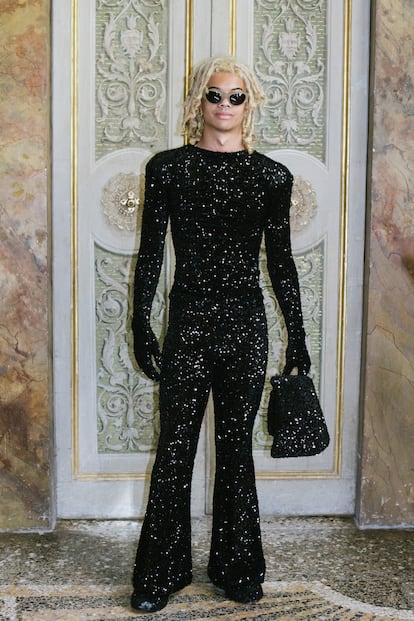
If a label is required, make it that of California couture, a stylistic interpretation embodied by the monumental patchwork blanket that wrapped rapper A$AP Rocky at the 2019 Met Gala and which accentuated Dior Men’s spring/summer 2023 capsule collection, in which he intervened as a guest designer (not just a simple collaborator). “I don’t make any statements in my work, actually,” he points out. “I think it’s better not to say too much with art. For me, I’m just communicating what’s in my head and then letting people interpret it. And if they want to think of me like another asshole from America, it’s ok. I just like to do whatever I want.”
Sign up for our weekly newsletter to get more English-language news coverage from EL PAÍS USA Edition
Tu suscripción se está usando en otro dispositivo
¿Quieres añadir otro usuario a tu suscripción?
Si continúas leyendo en este dispositivo, no se podrá leer en el otro.
FlechaTu suscripción se está usando en otro dispositivo y solo puedes acceder a EL PAÍS desde un dispositivo a la vez.
Si quieres compartir tu cuenta, cambia tu suscripción a la modalidad Premium, así podrás añadir otro usuario. Cada uno accederá con su propia cuenta de email, lo que os permitirá personalizar vuestra experiencia en EL PAÍS.
¿Tienes una suscripción de empresa? Accede aquí para contratar más cuentas.
En el caso de no saber quién está usando tu cuenta, te recomendamos cambiar tu contraseña aquí.
Si decides continuar compartiendo tu cuenta, este mensaje se mostrará en tu dispositivo y en el de la otra persona que está usando tu cuenta de forma indefinida, afectando a tu experiencia de lectura. Puedes consultar aquí los términos y condiciones de la suscripción digital.
More information
Archived In
Últimas noticias
Most viewed
- Reinhard Genzel, Nobel laureate in physics: ‘One-minute videos will never give you the truth’
- Oona Chaplin: ‘I told James Cameron that I was living in a treehouse and starting a permaculture project with a friend’
- Pablo Escobar’s hippos: A serious environmental problem, 40 years on
- Chevy Chase, the beloved comedian who was a monster off camera: ‘Not everyone hated him, just the people who’ve worked with him’
- Why we lost the habit of sleeping in two segments and how that changed our sense of time
